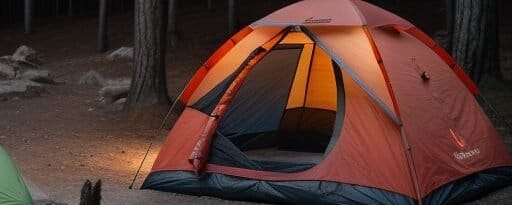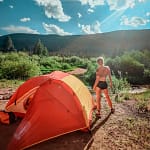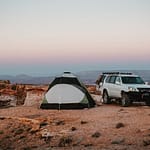Campfire Cooking Equipment Guide: What You Actually Need
Campfire Cooking Equipment Guide: What You Need
There’s something magical about cooking over an open flame—crackling wood, smoky aromas, and food that just tastes better outside.
But if you’ve ever tried to wing it without the right gear, you know how quickly that magic can turn into frustration.
Whether you’re a seasoned camper or a newbie learning the ropes, having the right tools can mean the difference between gourmet campfire meals and half-burnt hotdogs on a stick.
This guide breaks down everything you need for successful, stress-free campfire cooking in 2025.
Factors to Consider Before Choosing Campfire Cooking Tools
Before piling cooking gear into your backpack or car trunk, ask yourself a few key questions. Are you car camping or backpacking? Your answers influence how much weight and bulk you can carry. Car campers can afford the luxury of heavy-duty gear like cast iron, while backpackers need compact, lightweight alternatives.
Next, consider which cooking methods you plan to use. Grilling, roasting, boiling, and baking each require different tools. If you’re feeding a group, your setup will differ drastically from a solo overnighter. Also, take into account the durability and portability of your gear. You want equipment that can withstand open flames and rugged use but is still easy to pack and transport.
Essential Campfire Cooking Tools Checklist
Here’s a down-to-earth list of core tools every camp cook should have, regardless of experience level or camping style.
Cookware
- Cast Iron Skillet: The undisputed king of campfire cookware. Durable, versatile, and perfect for searing, sautéing, or even baking.
- Cast Iron Dutch Oven: Ideal for slow-cooking stews, soups, or even baking bread. Its heavy lid traps heat evenly.
- Grill Grate or Campfire Tripod: Gives you a stable cooking surface above your fire. A tripod adds flexibility for kettle hanging.
- Camping Pots and Kettles: Lightweight but sturdy aluminum or stainless steel options are great for boiling water or cooking pasta or rice.
Cooking Utensils
- Long-Handled Tongs: Keep your hands safe while flipping food over the fire.
- Heat-Resistant Spatula: For flipping burgers, pancakes, or eggs on a skillet or grate.
- Wooden Spoon: A must for stirring stews or scrambling eggs without scratching cookware.
- Grill Fork: Useful for checking doneness or managing larger cuts of meat.
Fire Management Tools
- Fire-Starting Supplies: Always carry matches, a lighter, and fire starters. You never want to rely on just one method.
- Fire Gloves: Heavy-duty gloves protect you from high heat and allow safe pan handling.
- Small Shovel or Fire Poker: For manipulating coals or adjusting the fire safely.
Food Prep and Cooking Accessories
- Cutting Board: Compact and lightweight. Choose plastic or bamboo for easy cleaning.
- Chef’s Knife: A sharp, reliable blade is critical for prepping vegetables, meat, and more.
- Mixing Bowl: Great for marinating and mixing ingredients—collapsible silicone bowls save space.
- Aluminum Foil: MVP of camp cooking—use it for baking potatoes, protecting grill grates, or creating foil packet meals.
- Skewers or Roasting Sticks: Perfect for hotdogs, marshmallows, or kebabs over the fire.
Cleanup Gear
- Biodegradable Soap: Gentle on nature but tough on grease. Always dispose of soapy water properly.
- Collapsible Sink or Basin: Makes cleanup convenient and efficient at any campsite.
- Scrubber or Sponge: Choose one with a rough side to handle cast iron grime.
- Microfiber Camp Towel: Quick-drying and compact—essential for drying dishes or wiping hands.
Optional but Helpful Extras
While not necessary, these add-ons can seriously improve your cooking experience.
- Campfire Grill Grate with Adjustable Height: Allows you to control cooking temperatures with precision.
- Chimney Starter for Charcoal Fires: This fast-tracks your fire-building without the need for lighter fluid.
- Portable Camp Stove Backup: Always good to have as a Plan B when the weather is uncooperative or fire restrictions are in effect.
- Food Thermometer: Especially important for grilling meat to safe internal temperatures. The USDA states, “Always use a food thermometer to ensure foods are cooked safely.”
- Folding Table: A stable surface can streamline your entire food prep and cooking setup.
Tool Maintenance Tips for Longevity
Maintaining your campfire cooking gear ensures it will serve you for years to come. With cast iron, clean it while warm and dry it immediately. Apply a thin layer of oil to prevent rust. Never use soap on seasoned cast iron—it’s better to scrub with salt and warm water.
Between trips, store all equipment in dry, sealed containers or bins. Avoid leaving items in damp areas like garages or basements. Periodically inspect tools for wear and tear so you’re never caught unprepared in the backcountry.
Packing Tips for Efficient Gear Organization
Keep your gear organized to avoid mealtime chaos. Use gear rolls or storage totes to group similar items—one for utensils, another for cookware, and a third for cleanup items. Labeling bins can save time at camp.
While cooking, keep essentials within arm’s reach using a hanging gear organizer or portable kitchen caddy. Don’t bring everything—stick to what you’ll realistically use. It’s a delicate dance between overpacking and under-preparing.
Final Thoughts
The right campfire cooking gear can elevate your camping meals from basic to gourmet with far less effort than you might expect.
Understanding your camping style, meal preferences, and group size will guide your equipment choices.
Start with the essentials, maintain your tools with care, and pack smartly to get the most out of every campfire meal.
With these tips and tools, your camp kitchen will become the heart of every outdoor adventure. Safe cooking and happy camping!
“`









